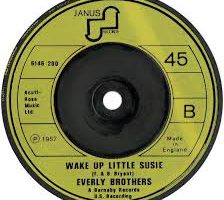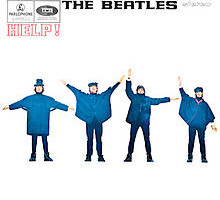Sixties and Seventies music is still the best!
Read More
Rock and Roll Never Forgets


Sixties and Seventies music is still the best!
Read More

When the old sorrows rise up, the press of a button can send a rich honey of harmonies and voices to pour over my scars.
Read More

Back in the early days of the Internet, I wrote for a short-lived interactive startup in Santa Monica. I was a practicing jazz musician at the time, so of course I needed the money. Before the interactive outfit folded I happily researched and wrote a brief musical history of Mozart, a jazz jukebox, a classical jukebox and a funky portrait of James Brown.
Since childhood, music had flowed through me like blood but I had never realized the scope and scale of my lifelong affair with music until I wrote those interactive cameos.
My first musical memory involved playing the harmonica with reckless abandon to a 78-rpm Josh White recording. We still lived in the housing projects in Jamaica Plain, Boston, so I must have been three. I remember hearing the classics, the Soviet pianists, cellists, recordings of the Red Army Chorus, Songs of the Spanish Civil War, all etched into brittle shellac.
In pre-suburban Massachusetts, I joined the junior choir of a spectacular, picture-postcard, Norman Rockwell version of a New England Unitarian Church, built in 1756, its peg-and-beam structure and grandiose simplicity startlingly intact.
Those protestant hymns, I could never remember the lyrics, they meant nothing to me — The Lord, ye know, is God indeed / Without our aid He did us make / We are His folk, He doth us feed / And for His sheep He doth us take… really???
Meaningless lyrics notwithstanding, harmonizing with the church’s massive pipe organ and my choral cohort gave me an unforgettable, ecstatic sensation of flight.
Timing was everything. As with every generation, I was convinced that I had been born at exactly the right time to be surrounded by the hippest music the planet had ever known. I projected my endless adolescent crushes onto the cascade of Top 40 tunes that gushed through my after-hours earphones, wading through 45 minutes of dedications to hear Carl Perkins sing “Blue Suede Shoes,” Fats Domino roll out “Blueberry Hill,” and Elvis pleading “Don’t be Cruel.”
While still in grammar school, I was exposed to bebop by our senior band drummer. I was the junior band drummer and my crew-cutted mentor would lend me ultra-hip LPs featuring Art Blakey, Buddy Rich, Max Roach, and of course, Gene Krupa. I remember my seventh-grade history teacher going ballistic when I named Krupa, Benny Goodman’s powerhouse drummer as my hero. “He’s a low life,” the teacher shouted, all red in the face, “a dope fiend.” It wasn’t the first time I remember labeling an adult as “uncool.” I was 12 and I knew what cool was. Krupa wasn’t rockin’ Buddy Holly but he sure knew how to swing.
Between explosions of seminal rock ‘n roll, my family made Thursday evening excursions to Symphony Hall where you could hear the Boston Symphony Orchestra rehearse for cheap. My sister and I would race into the balconies to claim the best first-come, first-serve seating. My mother fell unabashedly in love with the symphony’s debonair first trumpeter, the Parisian Roger Voisin. I mean, it was embarrassing, but he was good looking.
By age 15, I had discovered Kerouac, the beat poets and folk music. Now it was my turn to fall in love. I purchased a $75 Harmony guitar and learned every song Joan Baez recorded on her first album, every tune Odetta and Dave Van Ronk sang. Even the Kingston Trio had cool, tragic material to learn. I was into tragedy.
That summer I attended a Quaker summer camp where all the kids from New York were talking about Mississippi blues players like Howlin’ Wolf, Leadbelly, Big Bill Broonzy, and John Lee Hooker. Once again, a new musical world opened wide and embraced me.
I began performing traditional folk music as collected by archivists John and Alan Lomax. I teamed up with a folkie friend and built a repertoire of blues, ballads and hollers, learning the changes and words as authentically as possible, an essential element of the folkie religion. There was a right way and a wrong way to sing those songs…until Bobby Dylan came along.
My folk singing partner showed at my house one day. We had planned to learn a few more traditional tunes when he said, “I got a new one.” He then finger-picked and sang his way through Dylan’s “Don’t Think Twice.” Instantaneously, Dylan blew our minds; he had turned the whole folkie scene upside down.
While we and the rest of the folksingers were faithfully reproducing old tunes, Dylan was grabbing from Woody Guthrie and Cisco Houston, twisting Appalachian murder ballads into protest tunes, cross-pollinating labor songs, spirituals, dust bowl ballads, rock and roll, the blues, and the talking blues of Pete Seeger, spitting out lyrics that spoke to the wry, ironic, caustic, rebellious, rage-driven sense of the world as we were beginning to know it.
Dylan sang as the gray-flannel, McCarthyite, conformist 1950s, whose only saving grace was the music, turned to the resistant, rebellious, and contrary 1960s. Blast off.
*
Freshman year, I had a friend who was a classical pianist, and — as much as the dorm room stunk of freshmen boys — it rocked from Mozart to Rachmaninoff, from Weber to Orff. Horrible football jock roommates in Quincy House left me alone with my bleak Dylan tunes until I…
Moved off campus to my tumultuous Putnam Avenue pad where we all lay on one bed, stoned, listening to Jim Kweskin, the Stones, the Beatles and then came Motown and Stax/Volt and Sam & Dave and Otis Redding out-stoning the Stones on “Satisfaction,” fade to…
The day I arrived back from California in my battered Ford station wagon, and heard the Mamas and the Pappas sing “all the leaves are brown,” just as I pulled up to Putnam Avenue where the landlord was busting into the apartment with two cops and two plainclothesmen and he stopped and shouted, “there’s one of ‘em now,” pointing at me and…
Listening to Otis sing “Try a Little Tenderness” on acid and couldn’t get the ending — if you play it on YouTube, you’ll understand — out of my head, crazy and…
Graduation and heading back to the Haight Ashbury where I joined the antiwar movement and for a buck twenty five you could hear Janice Joplin with Big Brother, Eric Clapton and Cream, Jefferson [then] Airplane pre Starship, and the forever noodling Grateful Dead and the Paul Butterfield Blues Band and…
In the 70s, joining the priesthood in San Francisco where jazz was the hippest religion, there was so much jazz to play, more to listen to, Coltrane, 24/7 in the Harrison Street loft where I lived with two drummers and another bass player.
*
Interspersed through it all…
The approaching rock and roll of steam locomotives climbing the grade on the Boston & Maine tracks across the meadow and down the ravine and…
Voices from the next orchard, me perched high in a tree dropping perfect apples into a canvas shoulder sack, hearing every word spoken or whispered in the clear, still September air and…
The sound of Harley hogs driven by the wild bunches of restless WWII vets as they cruised the lake and the hot dog stand by the beach with all the tall, tall girls in their short shorts and…
The sound of country boy glasspak V-8 mufflers brapping out of the high school parking lot with the A-list cheerleaders and…
The silent cacophony of snow flakes falling and the sub-audible rumble and ping arcing across the newly frozen black ice on the pond and…
The static-borne scrabble of after-bedtime radio dramas like “The Great Guildersleeve” and “The Green Hornet and…
My mother playing Bach on the piano down the hall as I fell asleep.
There was so much to listen to.
# # #

The Beatles provide a (somewhat) useful language lesson.
Read More